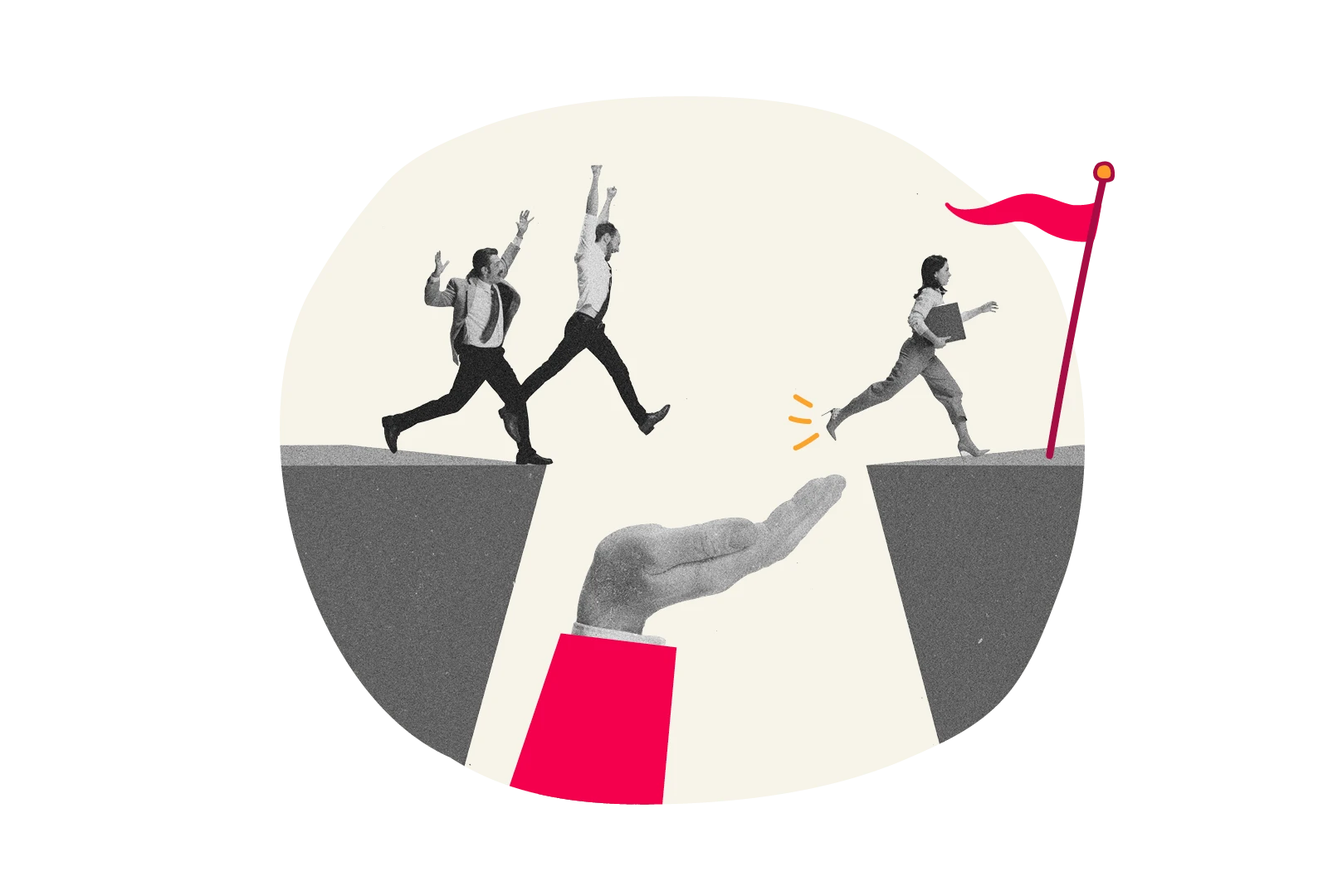With the global economy facing challenging times, global businesses everywhere are racing to cut costs and do everything they can to keep hold of their top talent.
According to the standard test, the United States has been in recession since the summer of 2022, and the rest of the world is similarly struggling with economic volatility.
For businesses, finding ways to minimize costs and maximize impact is crucial. As hybrid work became more common, for example, many businesses chose to reduce or optimize their office space to save costs. So it’s no surprise that software and technology systems are also coming under the microscope when it comes to company overheads.
This isn’t just about cost-cutting either: the right technical setup can help you to guide your business through tough times, increasing efficiency, supporting a healthy work environment, and championing global collaboration. It’s no surprise that investing in HR tech remains a top priority for global businesses.
As your organization’s technical decision maker, it’s up to you to consider how your tech stack can better support your people in times of recession, without breaking the bank. Today’s digital workplaces require integrated applications: by bringing systems together, you can make it easier for people to collaborate, share information, and get work done.
Here, we’re going to explore exactly what makes the perfect modern tech stack, and the main things to consider when facing up to today’s economic challenges.

Why does a powerful tech stack matter?
Technology has long been an important part of the workplace. But given how working practices have evolved over the last few years, it has become absolutely critical.
Global businesses rely on technology for collaboration between dispersed teams, for instant and asynchronous communication using instant messaging tools such as Microsoft Teams and Slack, and for managing complex projects.
Equally, technology has become an essential part of the social and team-building process at work. A modern human resources information system (HRIS), for example, no longer acts merely as a record-keeping tool. Instead, the best people-first software supports and drives your team culture, keeping people unified, motivated, and committed to the work of the company.
This means a modern tech stack needs to cover multiple areas of the business to be truly effective.
What are the areas your tech stack should cover?
Today, your tech stack has become far more than a system of record or engagement. Instead, businesses are using platforms at the very heart of their working processes, and, much like a modern smartphone, it needs to include a number of different tools. Here are the four main components:
Communication
No workplace tech stack is complete without a system that allows team members to talk to one another. Whether to answer queries or support each other’s work, good communication is at the heart of an effective business.
While email remains prominent in the workplace, many businesses today are primarily using instant messaging tools and video chat for their internal communications. These tools make it easier to get faster responses from colleagues, keep track of replies across different projects, and communicate when people are working in person, remotely, or in a hybrid arrangement.
Collaboration
Gone are the days of teams working as one unit on every project, sitting together in their own section of the office under the guidance of a single manager. Instead, teams at your business are likely to work in a variety of locations and across numerous time zones. People are also likely to move between teams for different projects (you might even have a comprehensive ‘liquid team’ approach as part of a dynamic workforce planning strategy).
This makes it more important to have a tech stack that facilitates seamless collaboration between different people in your organization. Your technology needs to provide ways for professionals to easily exchange work, share ideas, and collaborate.
Management
In complex, globally distributed teams, it’s important to have a system that helps your organization’s leadership teams to effectively manage workflows. In complex businesses with hundreds or even thousands of team members, keeping track of working hours, completing payroll accurately and reliably, monitoring project progress, and maintaining HR policies is near impossible without the right software.
Engagement
Finally, it’s important that your tech stack supports healthy team dynamics and drives your business culture by keeping people connected, engaged, and motivated. This might involve using technology to provide an exceptional experience to job seekers and during onboarding, supporting career progression and personal development among your teams, and providing the foundations for employee wellbeing.
Tools such as Donut, for example, let team members gather for virtual coffee or lunch meetings through a random pairing system, so that your people can get to know each other even when they wouldn’t otherwise directly interact.

Planning for the future: How should you go about evaluating your needs?
Before you can look at what’s out there and come up with a persuasive proposal for your senior leadership, you need to build your strategy for the future of technology at your business. To do so, follow these three steps:
- Carry out an audit of your existing tech stack
Planning for your future tech needs begins with the here and now. Start by evaluating your existing tech stack so that you can get a clear picture of what’s in use: based on evidence rather than assumptions.
Undertake a detailed review of every digital tool and HR technology your teams use—whether organization-wide or for one specific function—and note down who is using it, how often, and for what purpose. Look across your entire organization, such as applicant tracking systems like Greenhouse used in recruitment, HR tools, finance platforms, communication systems, and customer databases.
- Talk to your people
Next up, take the time to speak to everyone who uses your tech stack, in all parts of your organization.
Work with your HR team to conduct a series of surveys and research interviews with people at all levels of your business to ensure you truly understand how people are using the tech, what’s working, and what could be improved.
Make sure to note the key functions they report needing, rather than simply the systems they currently use, as there may be a more effective way of achieving the same end goal via a different process.
Also, keep a log of which parts of their workflow are essential and cannot be replaced to ensure these are given due regard in your optimized tech stack.
- Connect the dots, and see what’s missing
Finally, compare your findings. Examine your existing setup compared to ideal workflows, and you’ll quickly see where the gaps or opportunities for improvement lie.
It’s also important to consider the size of your company and approach to recruitment during challenging economic times. For example, small businesses that rarely recruit are far less likely to need an in-depth recruitment platform, or to be looking for a robust system for rewarding and recognizing people across global locations.
Consider your leadership’s plans for the future: for example, if rapid up–or down-sizing is possible, ensure your tech stack is agile and flexible enough to accommodate those changes. Platforms that work exceptionally well for a team of 100 might not cut it when you scale to 200 or 300 employees and vice versa.

What should you look for in the perfect recession-proof tech stack?
Now that you’ve analyzed your needs, it’s time to hit the market and find the right tools for your business.
There are six common characteristics in the ideal tech stack to guide you through turbulent economic times. Here’s what you should look for in the ideal setup:
- A tech stack built around you
Based on your findings, you should now have a clear idea of exactly what you need your tech stack to do, in terms of pure functionality for your business. That means you can now base your software research on your own precise use case, rather than merely looking at off-the-shelf options and reframing your organization’s workflows to fit the new system.
Of course, unless you’re keen to rebuild from the ground up, it’s unlikely that you’ll be looking to onboard an entirely new suite of software, so it’s crucial that any systems you do take on can integrate seamlessly with your existing platforms, whether that’s Slack, payroll providers, or your learning management system (LMS) such as 360Learning. Making sure everything integrates will also help keep workflows efficient and easy to organize, and ensures a streamlined end-user experience.
Additionally, customization is important here. No two businesses are truly alike, and HR tech should be flexible enough to meet your needs. For example:
- Applying your unique branding
- Connecting the right teams across different languages and currencies
- Supporting localized onboarding for different roles in different locations
- Sharing information with stakeholders, both internally and externally
With customizable, integrated systems, it’s much easier for your people to work together, share information, and get the job done.
- The power to automate processes and track trends
Few people enjoy repetitive tasks at work, and they can act as a real drain on productivity. Among HR professionals that’s equally true, which is why a modern HR platform takes care of anything and everything that can be easily done with human oversight rather than input.
An intelligent HR automation strategy can take care of the most repetitive HR processes, such as:
- Form entry and day-to-day administration
- Payroll and benefits management, via a rewards tool like PerkBox
- Recruitment administration, referral programs, and onboarding
- Offboarding, and internal communications
- Tax forms, timekeeping, sick day, and vacation calculations
- Accurate record keeping
- Expense reports via a tool like Navan, and employee tracking via a tool like Deputy
This frees up your teams to concentrate on the people-focused side of their job, and provides managers with data-driven insights that can help them make better decisions for the company.
- Support to remain secure and compliant
According to IBM, the average data breach in the US costs businesses $9.44 million, and the average ransomware attack $4.54 million.
Unsurprisingly, data security is a crucial part of business planning, as is staying compliant with laws and regulations across every jurisdiction in which you operate.
The best HR technologies help you to meet these security demands, apply complex workflows, and remain compliant at the local, state, and international levels. By streamlining data management and access control, these systems can help prevent data breaches, protect sensitive information, and integrate with additional security or encryption tools where required. Consider taking on a partner such as an employer of record like Remote to help you stay compliant as you scale.
It’s also important to consider enhancing your screening processes. Tools like VerifiedFirst provide background and drug screening in the US, and Zinc is great for reference-checking across the EMEA region.
By making sure your data is only accessible to those who need it, is consistent and accurate, and that your security profile doesn’t compromise the clarity and transparency you share with your people, the perfect HR tech stack can save you time and money.
- A modern, digital-first experience
These days, we’re all used to working with applications across devices. Modern HR tech should be no different, and the best solutions work on mobile, tablet, and computer devices thanks to a cloud-based hosting arrangement. With data synched automatically and kept up to date, it’s easy to switch between access points, and pick up seamlessly where you left off.
Equally, user experience is an important part of making sure your teams can work efficiently and productively with your suite of tools. The systems you choose should be intuitive and easy to use, just like the very best consumer apps.
With self-service portals and helpful tools, the best HR tech allows managers to express empathy and support for their people—even when working remotely.
- Data that enhances your holistic strategy
When people interact with your tech stack, they naturally create data points that can provide useful insights for your leadership teams. This might include usage patterns that inform the amount of support you need to provide for different tools, as well as any bottlenecks that are affecting their processes.
Pre-made dashboards and custom reports are an ideal way of aligning your tech stack with your wider organizational engagement and retention strategies. Look for systems which allow you to get the most out of your data, maximizing your return on your tech investment.
- A trusted partner that adapts with you
Today’s tech systems are about so much more than a platform or piece of software. Given the complexity of your business’s needs, the partnership with your technology provider is equally important to consider.
At the same time, during a recession scalability is key. Your ideal tech stack includes the features you need and nothing else, and has the power to grow or optimize at short notice to suit the changing face of your business.
Make sure you find a partnership that works for you, making it easy to adjust customizations, scale up or down, onboard new functionality, and respond fluidly to the evolving needs of challenging times.

Recommended For Further Reading
Your HR tech stack: A strategic partner in difficult times
When the economic seas become turbulent, it’s even more important that you invest in a tech stack that increases your efficiency and productivity. The best HR systems keep your teams unified and motivated, enable effective work for global colleagues, and don’t add too much stress to your bottom line.
Done right, your tech stack, built on optimized integrations, can be the spark that gives your people the tools they need to achieve their goals.
By looking clearly at what you have and what you need, with an agile mindset, you can find a customizable setup that supports seamless integration, delivers security and compliance, and lays the foundations for a truly digital-first experience.
With the right HR tech stack, you can recession-proof your business, and help see it through to the better times ahead.
Meet Bob
At HiBob, we’ve built a modern HR platform designed for modern business needs—today and beyond.
We focused on building something that is robust yet intuitive and easy-to-use, which has led Bob to be the platform of choice for thousands of fast-growing modern, mid-sized organizations.
For HR, it delivers automation of many common processes, allows greater oversight and visibility of the business, and centralizes all people data in a secure, user-friendly environment.
For managers, it provides access to data and insights to help them lead more effectively and streamline processes.
For employees, it’s the tools and information they need to connect, develop, and grow throughout their journey.
